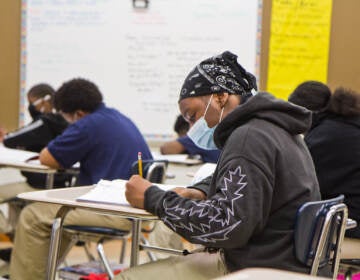Virtual school lets teachers see directly into students’ lives. Here’s what they’re learning
Virtual learning has brought teachers into students' homes every day. But can that help them build relationships with students remotely?
Listen 3:55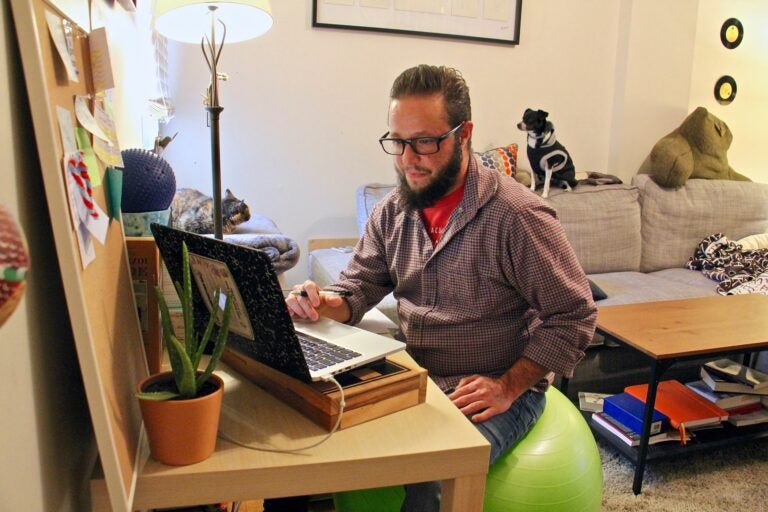
Sonny Bavaro teaches via Zoom from the living room of his Kensington rowhouse. (Emma Lee/WHYY)
As soon as students logged on for the first day of virtual school, Reading School District teacher Kyle Wilson heard the first chirps.
Was it something wrong with his headset? He waited. More beeps. And then more beeps.
Finally, he realized: about a quarter of the students in his fifth-grade math and science classes didn’t have functioning smoke detectors in their homes.
“I need to do something,” Wilson thought.
So he did, fundraising over $1,200 on social media to make sure families in the district have working detectors.
Those little beeps signaled something else — the fact that virtual education was bringing Wilson into his students’ homes. He was learning little details about their lives he’d never known before.
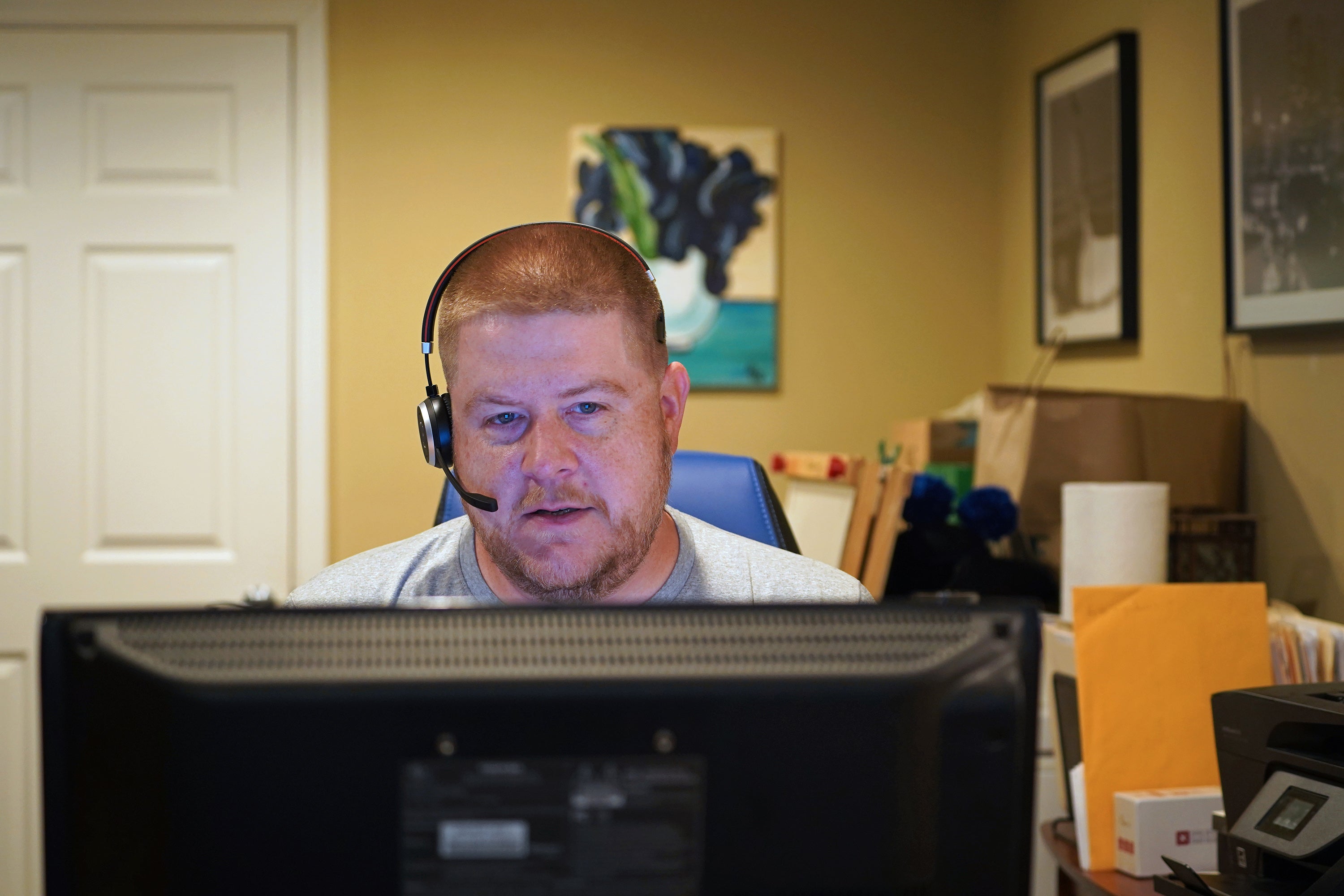
“Coming into the year, that was my biggest fear: ‘How the heck am I gonna get to know these kids?’” said Wilson.
He’s been pleasantly surprised. Whether it’s a pet walking across the screen or a baby sibling babbling in the background, he feels like he’s connecting with his students in new ways.
“It’s actually led to so many conversations just by what we see in each other’s homes,” said Wilson. “I’ve never met these kids and I feel like I know a lot of them very, very well.”
In school districts with virtual education, teachers and students are spending hours a day beamed into each other’s homes. It’s a big departure from meeting face-to-face in school classrooms.
Some teachers say the virtual setup has been a revelation. Others feel it doesn’t come close to approaching the intimacy of the real thing.
But all teachers are searching for new ways to forge connections with the kids flickering on their computer screens.
“More important than content is the kid,” said Jake Miller, an eighth-grade history teacher from the Cumberland Valley School District, outside Harrisburg. “I really value relationships.”
Getting to know you
Teachers say relationship-building is the special sauce of the profession. There’s no recipe for how to do it, but every teacher knows it is indispensable to the education process.
“Why would a 14-year-old give two craps about the Civil War — which is something I’m passionate about — until they know I care about them?” said Miller.
In the spring, the veteran teacher found it difficult to foster strong connections with his students while online.
“It’s tough in that you’re probably only seeing what they want you to see,” Miller said.
For that reason, he’s thankful that his district opted for a hybrid school model this fall that allows him to see students in person twice a week.
In Philadelphia, some, mostly younger students, could return to school buildings after Thanksgiving, but officials don’t have a plan in place for most kids to set foot in classrooms all year.
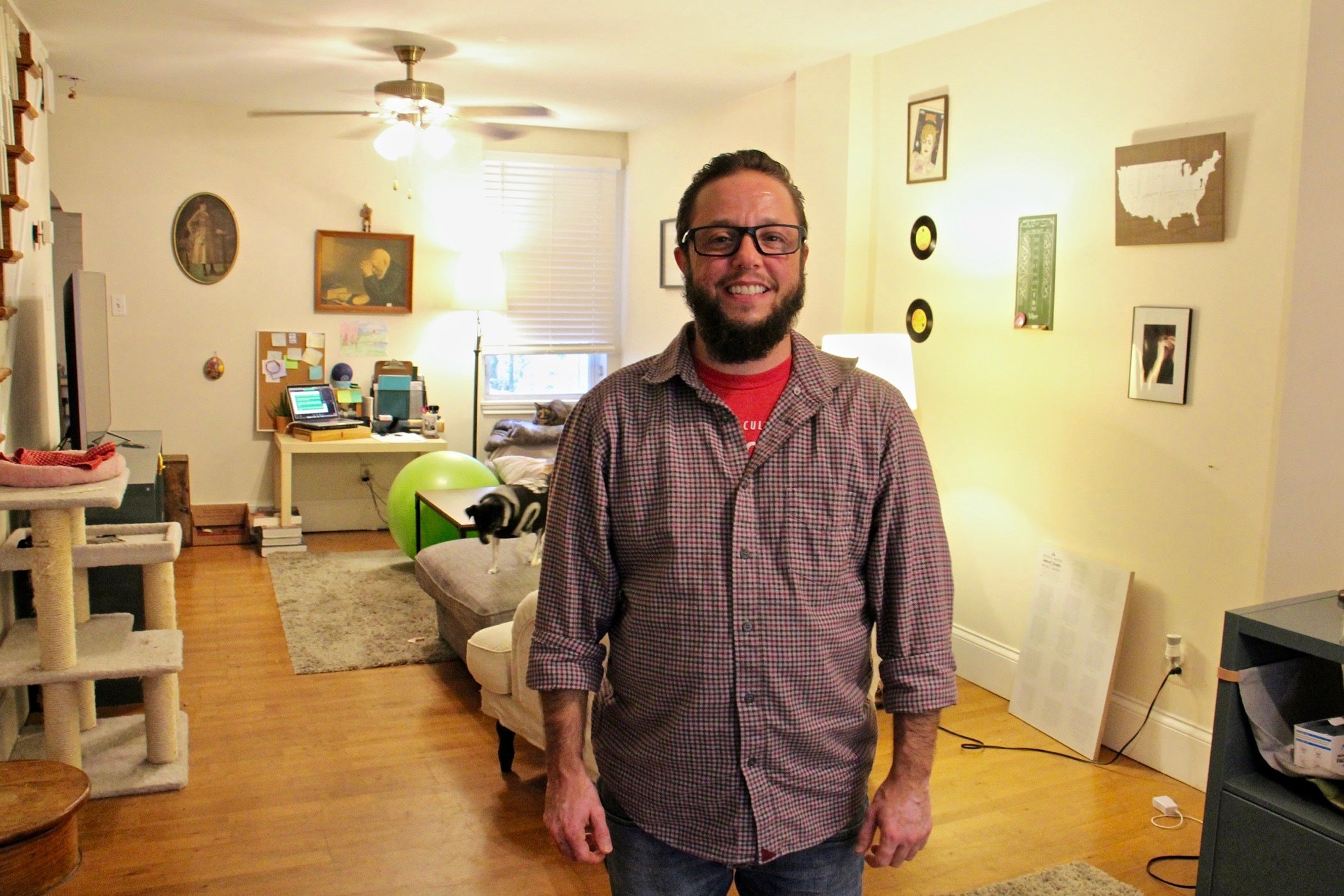
Amit Schwalb, a biology teacher at Walter B. Saul High School in Roxborough, has tried to use quirky poll questions at the beginning of class to learn things about students during virtual learning. A pro-con question about mayonnaise recently sparked a fierce debate.
But he feels he doesn’t understand the depth of his students’ personalities to the extent he would in a normal school year.
“On the whole, I definitely feel like I know less,” said Schwalb.
There are exceptions, though. Online learning requires intense and regular contact with students “who are really struggling — struggling so hard that it becomes more immediately obvious than it would in person.” That includes students with learning disabilities or students who have technology needs, Schwalb said.

For other teachers, online education has led to more communication with families.
Part of Evan Grossman’s job at H.A. Brown School in Kensington involves calling the parents of each student who doesn’t log in on a given morning. Some of the same students pop up regularly, and those regular calls have started to blossom into small relationships.
“I feel like a lot of parents are appreciative,” said Grossman. “It’s not like the school is nagging. Now it’s like, ‘No, the school wants to help.’”
‘It’s chaos’
Leyla Lindsay, a fourth-grade teacher at Fitler Academics Plus in Germantown, believes the transition to online learning has forced some of her colleagues to confront the challenges students face in their home lives.
“For some educators, I think virtual teaching is helping them become more understanding, more empathetic and less judgemental,” Lindsay said.
Teachers say that what they see or overhear during their virtual classes isn’t necessarily a surprise — but does trigger a sort of daily reckoning with the circumstances that can hamper students’ learning.
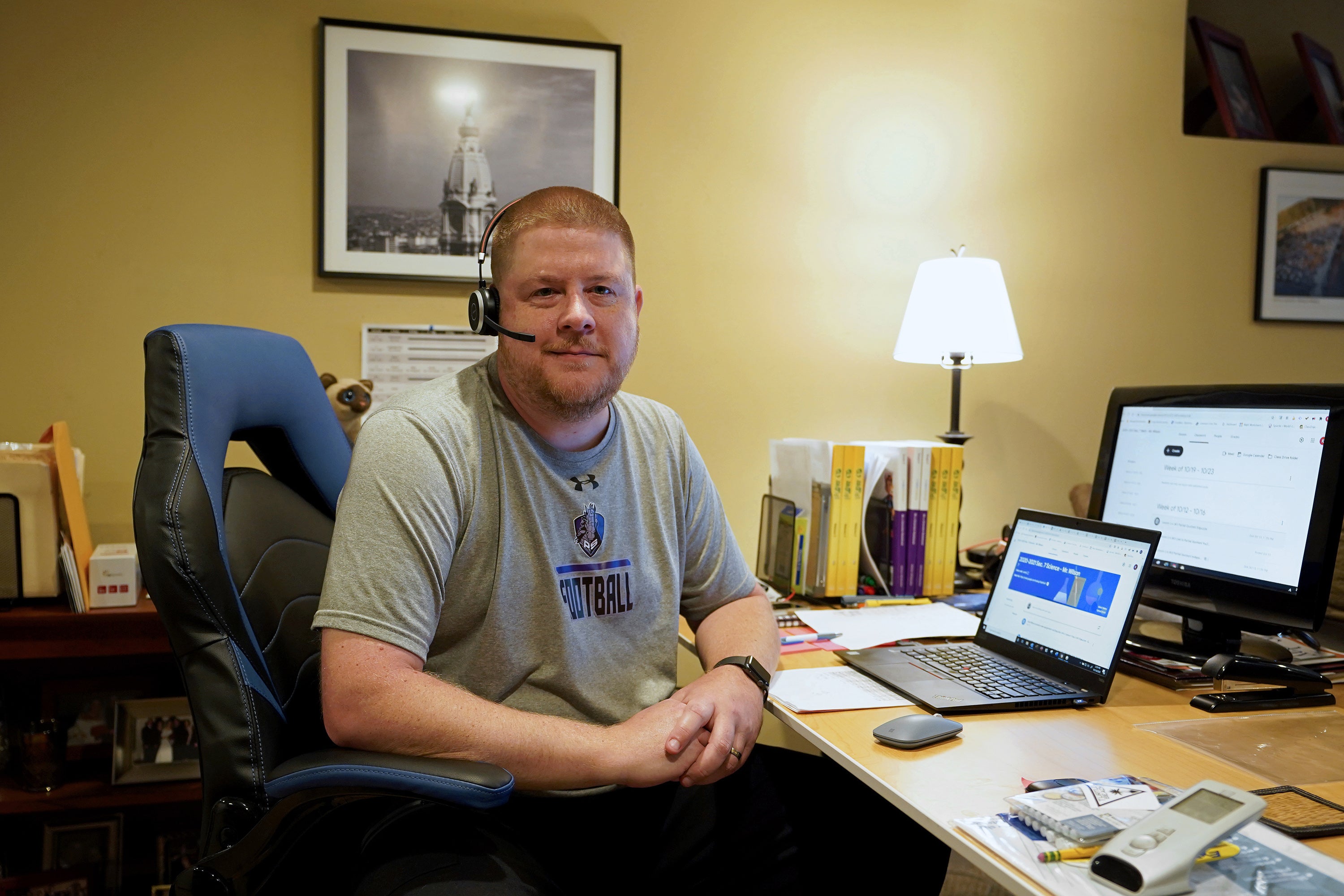
“It helps to delineate who might be struggling because they have lots of things going on, and also who is really successful because they’re like sitting at a gorgeous dining room table and their mom is sitting there with them,” said Sonny Bavaro, an English teacher at the Arts Academy at Benjamin Rush in Chalfont.
When some students unmute themselves, said fifth-grade teacher Michelle Bernardi, it’s impossible to ignore the blasts of noise that follow.
“It’s chaos,” said Bernardi, who teaches at Rhawnhurst Elementary. “There’s so much happening. I don’t know how they’re even listening to me.”
Teachers say they’ve grown accustomed to televisions blaring, cookware clattering, or siblings wailing. For some of their students, it is simply the soundtrack of their lives. And it’s a reminder, for Bernardi, to be patient with her students.
“I have to take a minute to be like, don’t freak out at them about doing x, y, and z,” said Bernardi. “That kinda helps me take a step back.”
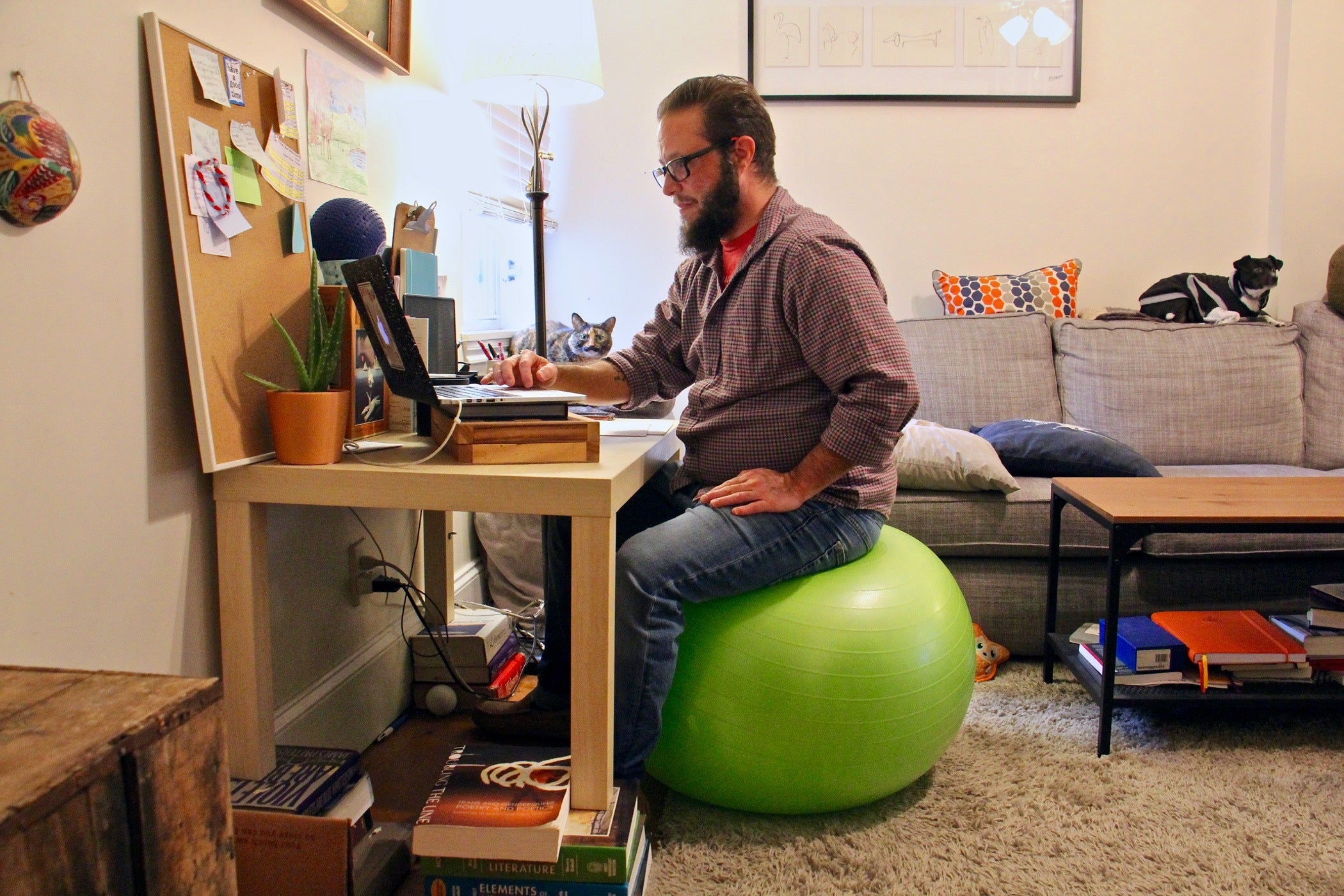
Little black squares
A collage of sights and sounds from a student’s homes is not, however, a full portrait.
And many teachers find there’s no online equivalent for key parts of the in-person experience.
For instance, Berandi can’t pick up on the body language that usually alerts her to a student’s mood. Usually, she springs into action when she sees kids sagging their shoulders or laying their heads down on their desks.
The task is made all the more difficult when teachers can’t see students at all.
The School District of Philadelphia — like many others — prohibits schools from requiring students to turn on their cameras. Teachers can encourage camera use, but many say they’re often staring into a sea of black boxes.
“It’s certainly odd,” said Bavaro, the high school English teacher. “I spend a lot of time looking at my own little square.”
Teachers say it’s clear some students go that route to avoid scrutiny about their dress or decor, while others seem to take advantage of the option as a way to disengage.
Bavaro relies on the group chat to fill in the silence — and says his students flood it with comments every class.
“I actually get a lot more participation in the chat, and a lot more participation than I ever did in class,” said Bavaro.
In an online chat, he says, the students who usually drive the conversation aren’t as dominant. And private messages can become the digital equivalent of the pull-aside chat, giving students a discrete opportunity to open up.
He’s found some students seem more comfortable typing out their problems than saying them. Recently, a student confided in him about a shooting that took place on her block.
“She messaged me [and said] I’m a little freaked out,” Bavaro said.
It’s not that those conversations didn’t happen in-person. They just seem a little easier right now. Bavaro also wonders if his own introverted personality works a little better in the at-home, virtual environment.
“I think the remoteness really lends itself to my teacher-personality,” he said. “Learning while living has been kinda cool.”

Get more Pennsylvania stories that matter
WHYY is your source for fact-based, in-depth journalism and information. As a nonprofit organization, we rely on financial support from readers like you. Please give today.




![CoronavirusPandemic_1024x512[1]](https://whyy.org/wp-content/uploads/2020/03/CoronavirusPandemic_1024x5121-300x150.jpg)
